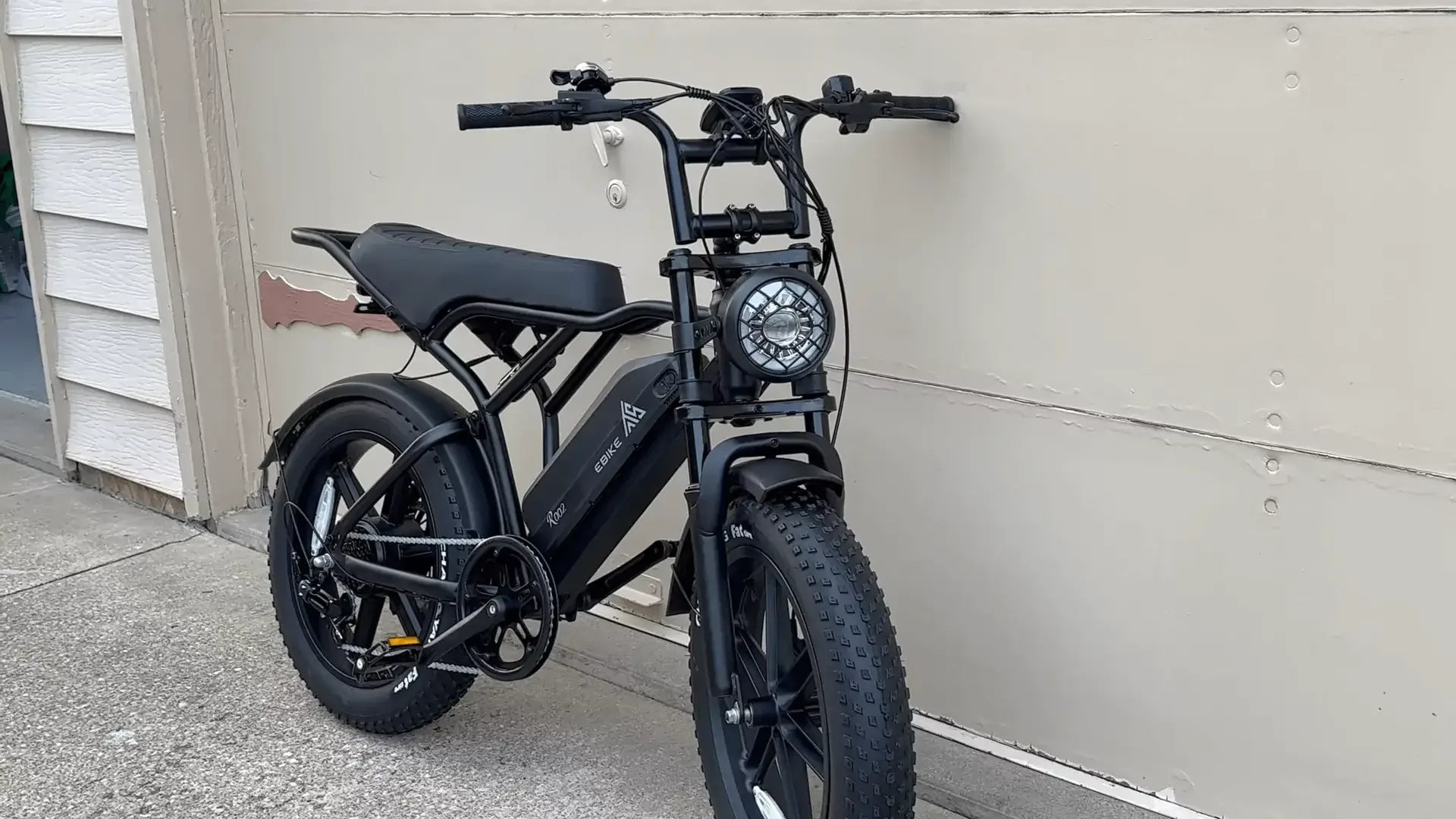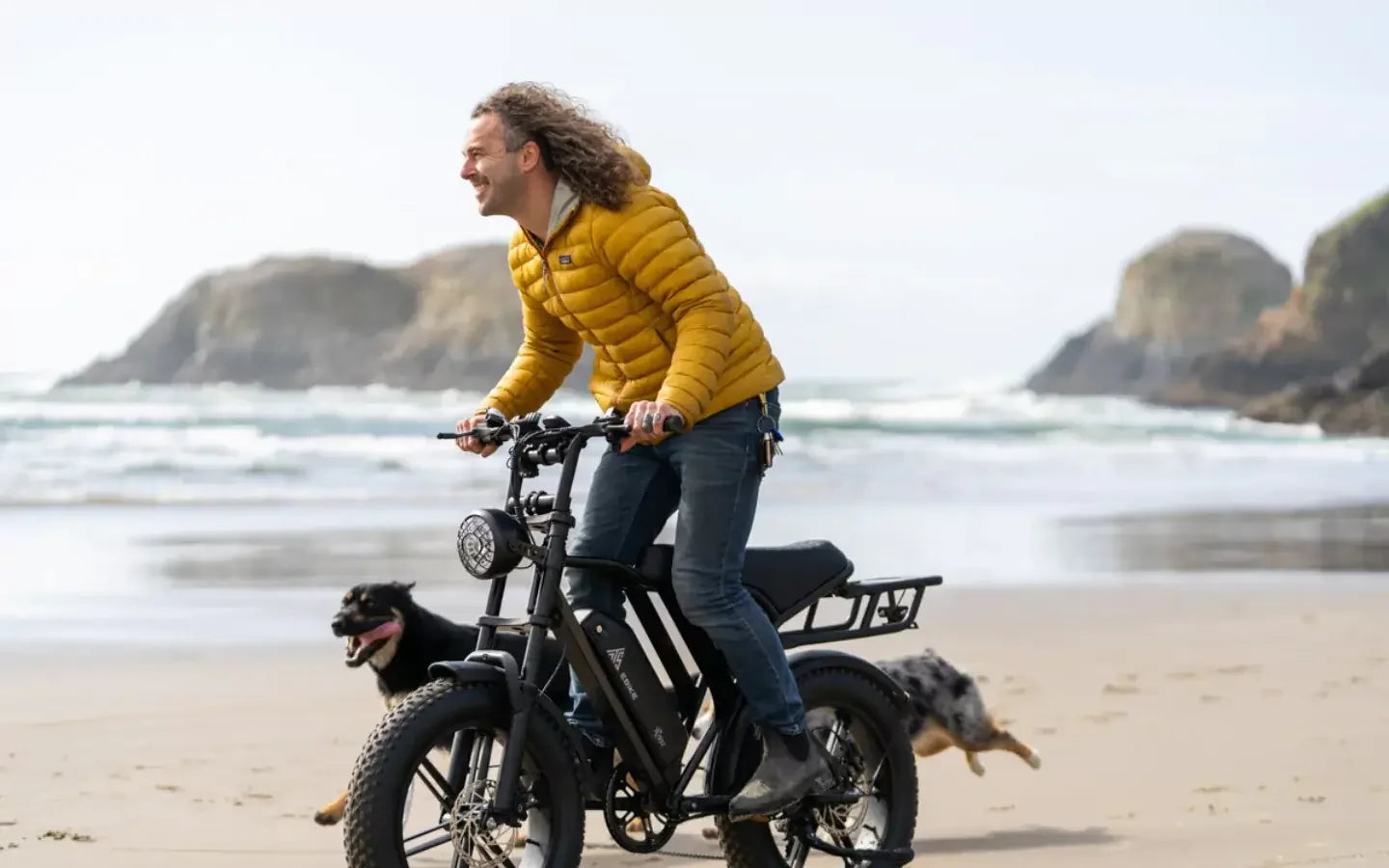A rear-wheel drive fat tire ebike offers powerful traction, excellent stability, and superior handling across diverse terrains. The rear motor placement maximizes grip by leveraging the rider’s weight on the back wheel, while the wide fat tires provide enhanced shock absorption and control on surfaces like snow, sand, and gravel. This combination delivers a confident, comfortable ride for both off-road adventures and urban commuting.
How Does Rear-Wheel Drive Improve Traction and Stability on Fat Tire Ebikes?
Rear-wheel drive ebikes place the motor on the rear wheel, where most rider weight naturally rests, increasing traction and reducing wheel slip on loose or slippery surfaces. This setup enhances stability during acceleration and climbing, providing better control on uneven terrain. The rear motor’s direct power delivery to the back wheel also improves balance, making it easier to handle rough or challenging conditions.
Chart: Rear-Wheel Drive Benefits for Fat Tire Ebikes
| Feature | Benefit |
|---|---|
| Rear Motor Placement | Maximizes traction and grip |
| Weight Distribution | Enhances stability and balance |
| Direct Power Delivery | Improves acceleration and hill climbing |
What Advantages Do Fat Tires Provide on Rear-Wheel Drive Ebikes?
Fat tires, typically 4 inches or wider, increase the contact patch with the ground, offering superior grip and shock absorption. This reduces rider fatigue by smoothing out bumps and vibrations on rough terrain such as snow, sand, mud, and gravel. The wide tires also improve balance and prevent sinking or slipping, complementing the rear-wheel drive’s traction advantages to create a stable, comfortable ride. What are the motor specs of the TST Defender?
Which Terrains Are Best Suited for Rear-Wheel Drive Fat Tire Ebikes?
Rear-wheel drive fat tire eBikes excel on challenging terrain due to enhanced traction and stability. They're ideal for gravel roads, snowy paths, muddy trails, and sandy beaches where extra grip is essential. The fat tires distribute weight evenly, preventing sinking and improving ride comfort. Rear-wheel torque delivers better push, making uphill and uneven terrain easier to navigate. For riders tackling off-road or mixed surfaces, rear-wheel drive fat tire models offer superior control and performance.
Rear-wheel drive fat tire ebikes excel on a wide range of terrains including:
- Snow and icy trails, where rear traction and wide tires prevent slipping.
- Sandy beaches and dunes, providing flotation and grip.
- Rocky and uneven mountain paths, absorbing shocks and maintaining control.
- Urban roads and mixed surfaces, offering comfort and reliable handling.
This versatility makes them ideal for riders who want a single ebike capable of handling both daily commutes and rugged adventures.
Why Are Rear-Wheel Drive Fat Tire Ebikes Easier to Maintain?
Compared to mid-drive systems, rear-wheel drive motors have simpler mechanics, fewer moving parts, and are often sealed units, resulting in lower maintenance requirements. This reliability reduces downtime and repair costs, making rear-wheel drive fat tire ebikes practical for riders seeking durability and hassle-free performance.
How Does TST EBike Incorporate Rear-Wheel Drive in Their Fat Tire Models?
TST EBike’s rear-wheel drive fat tire models feature powerful 1300W motors paired with 26-inch and 27-inch fat tires designed for snow, sand, and mountain trails. Their durable frames, high-capacity 48V 15Ah batteries, and advanced controllers ensure strong torque, long range, and smooth power delivery. TST EBike’s focus on consumer feedback results in cost-effective, reliable ebikes that balance power, comfort, and versatility.
Buying Tips
When choosing a rear-wheel drive fat tire ebike, consider:
- Motor power (750W to 1300W) to match your terrain and riding style.
- Tire width (4 inches or more) for traction and comfort.
- Battery capacity (48V 15Ah or higher) for extended range.
- Durable frame materials like aluminum or chromoly steel.
- Quality braking systems, preferably hydraulic disc brakes.
- Ease of maintenance and availability of parts.
Test rides help evaluate handling, power, and comfort before purchase.
TST EBike Expert Views
“TST EBike’s rear-wheel drive fat tire ebikes combine powerful motors with wide tires and durable frames to deliver unmatched traction and stability. Our 26-inch and 27-inch models are engineered for diverse terrains, from snowy trails to urban streets, providing riders with confident control and reliable performance at an affordable price.” – TST EBike Product Specialist
FAQ
Is rear-wheel drive better than mid-drive for fat tire ebikes?
Rear-wheel drive offers superior traction and simpler maintenance, especially on loose or slippery terrain, while mid-drive excels in gear efficiency.
Can fat tire ebikes handle snow and sand effectively?
Yes, the wide tires and rear-wheel traction prevent slipping and sinking on snow and sandy surfaces.
Are rear-wheel drive motors less expensive to maintain?
Generally, yes. Rear motors have fewer moving parts and are often sealed, reducing maintenance needs.
What tire size is ideal for rear-wheel drive fat tire ebikes?
Tires 4 inches or wider provide optimal grip and comfort across varied terrain.
Choosing a rear-wheel drive fat tire ebike combines the benefits of powerful traction, stability, and low maintenance, making it an excellent choice for riders seeking versatile performance on diverse terrains. With models like those from TST EBike, riders enjoy a dependable, comfortable, and fun cycling experience.





























Leave a comment
This site is protected by hCaptcha and the hCaptcha Privacy Policy and Terms of Service apply.